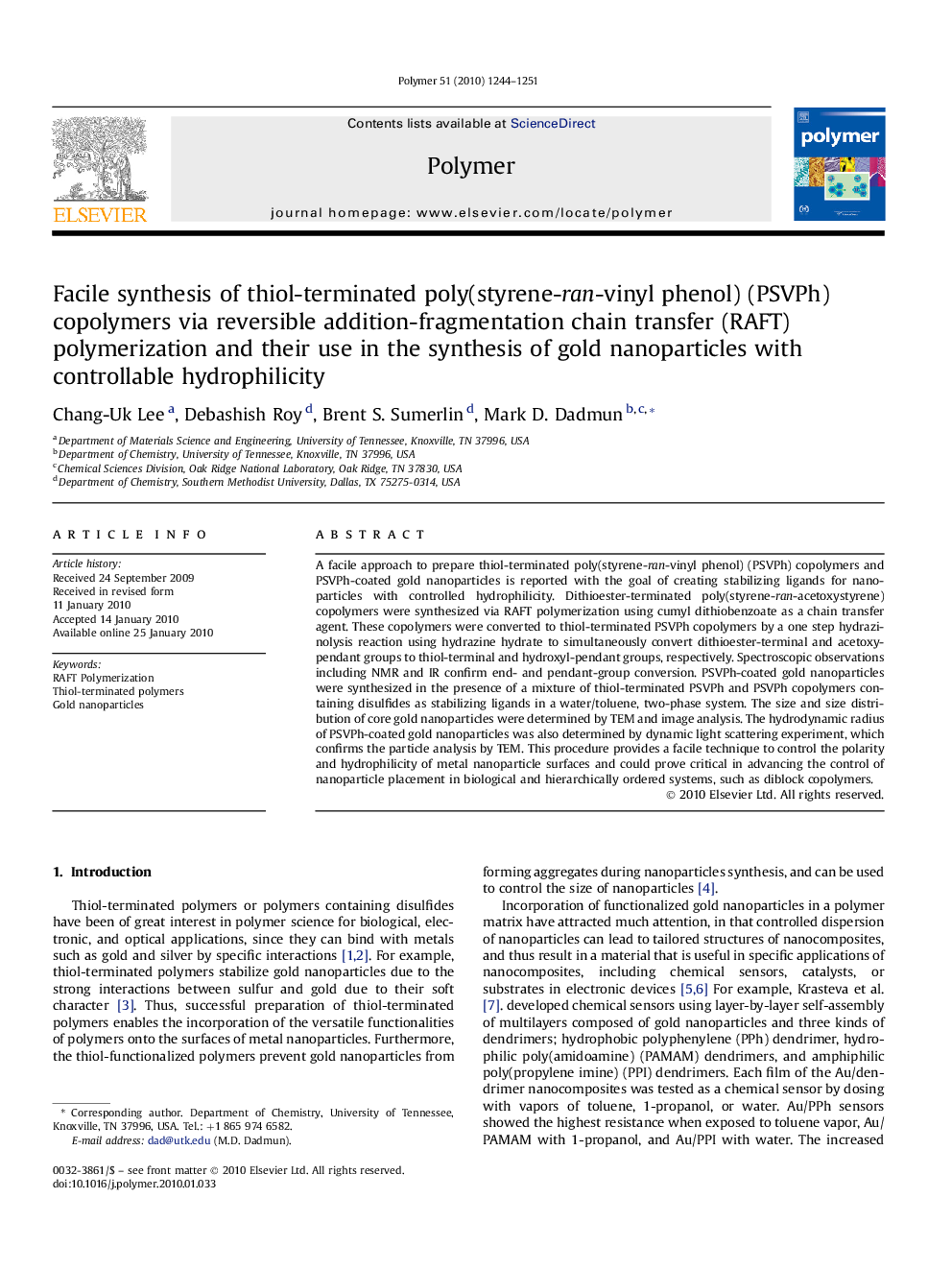| کد مقاله | کد نشریه | سال انتشار | مقاله انگلیسی | نسخه تمام متن |
|---|---|---|---|---|
| 5185430 | 1381077 | 2010 | 8 صفحه PDF | دانلود رایگان |

A facile approach to prepare thiol-terminated poly(styrene-ran-vinyl phenol) (PSVPh) copolymers and PSVPh-coated gold nanoparticles is reported with the goal of creating stabilizing ligands for nanoparticles with controlled hydrophilicity. Dithioester-terminated poly(styrene-ran-acetoxystyrene) copolymers were synthesized via RAFT polymerization using cumyl dithiobenzoate as a chain transfer agent. These copolymers were converted to thiol-terminated PSVPh copolymers by a one step hydrazinolysis reaction using hydrazine hydrate to simultaneously convert dithioester-terminal and acetoxy-pendant groups to thiol-terminal and hydroxyl-pendant groups, respectively. Spectroscopic observations including NMR and IR confirm end- and pendant-group conversion. PSVPh-coated gold nanoparticles were synthesized in the presence of a mixture of thiol-terminated PSVPh and PSVPh copolymers containing disulfides as stabilizing ligands in a water/toluene, two-phase system. The size and size distribution of core gold nanoparticles were determined by TEM and image analysis. The hydrodynamic radius of PSVPh-coated gold nanoparticles was also determined by dynamic light scattering experiment, which confirms the particle analysis by TEM. This procedure provides a facile technique to control the polarity and hydrophilicity of metal nanoparticle surfaces and could prove critical in advancing the control of nanoparticle placement in biological and hierarchically ordered systems, such as diblock copolymers.
Journal: Polymer - Volume 51, Issue 6, 11 March 2010, Pages 1244-1251